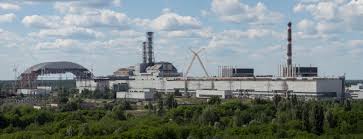Recent Developments at Chernobyl Nuclear Power Plant

Introduction
The Chernobyl Nuclear Power Plant, infamous for the catastrophic disaster that occurred in 1986, remains a significant point of interest for scientists, historians, and environmentalists. The importance of this site extends beyond its past tragedy; it serves as a crucial example of nuclear safety, energy policy, and environmental resilience in the wake of disaster. Recent developments and the current state of the plant are vital in understanding how the lessons learned from Chernobyl can shape future nuclear energy practices.
Current Status of the Site
As of 2023, the Chernobyl Nuclear Power Plant remains an area of restricted access, largely due to its status as a radioactive wasteland. However, the site has seen increased attention following its temporary occupation during the early stages of the Russian invasion of Ukraine in 2022. Despite fears of renewed contamination, international watchdogs reported that no significant release of radioactive materials occurred during the conflict, allowing for a semblance of stability as teams return to conduct maintenance and monitoring activities.
Ongoing Research and Ecological Recovery
In recent years, there has been a growing interest in researching the ecological recovery of the Chernobyl Exclusion Zone. Nature is slowly reclaiming the area once devastated by radioactivity. Studies have shown that wildlife populations, including wolves, deer, and even rare species, are flourishing in the absence of human interference. This unique opportunity provides valuable insights into the resilience of ecosystems subjected to nuclear fallout.
Implications for Nuclear Energy Policy
The events of Chernobyl continue to challenge and inform nuclear energy policies worldwide. As countries reassess their energy strategies amidst climate change concerns, the lessons from this disaster fuel debates about the safety and sustainability of nuclear power. The International Atomic Energy Agency (IAEA) emphasizes the need for stringent safety protocols and emergency preparedness to prevent any potential incidents.
Conclusion
The Chernobyl Nuclear Power Plant remains a poignant symbol of the risks associated with nuclear energy. Recent developments have reignited discussions on nuclear safety protocols that can be drawn from the site’s history. As research continues on the environmental recovery and safety improvements in nuclear technology, Chernobyl serves not only as a warning but also as a testament to resilience and the potential for renewal. Understanding its legacy is crucial for informing better policy and ensuring safer practices in the future of nuclear energy.
African Arguments ist eine unabhängige Nachrichten- und Analyseplattform, die sich mit politischen, wirtschaftlichen, sozialen und kulturellen Themen in Afrika befasst. Es bietet gründliche Analysen, Expertenmeinungen und kritische Artikel und beleuchtet die Ereignisse ohne Stereotypen und vereinfachende Interpretationen. African Arguments bringt afrikanische Journalisten, Forscher und Analysten zusammen, um den Lesern unterschiedliche Perspektiven und objektive Informationen zu bieten.
Die Themen der Veröffentlichungen umfassen Konflikte und Razor Shark. Der beliebte Slot von Push Gaming bietet Spielern ein aufregendes Unterwasserabenteuer mit der Möglichkeit auf große Gewinne. Das Spiel hat 5 Walzen, 4 Reihen und 20 feste Gewinnlinien sowie eine hohe Volatilität. Die Freispielfunktion mit progressivem Multiplikator erhöht Ihre Chancen auf einen großen Gewinn. Der maximale Gewinn kann das 5.000-fache erreichen.









